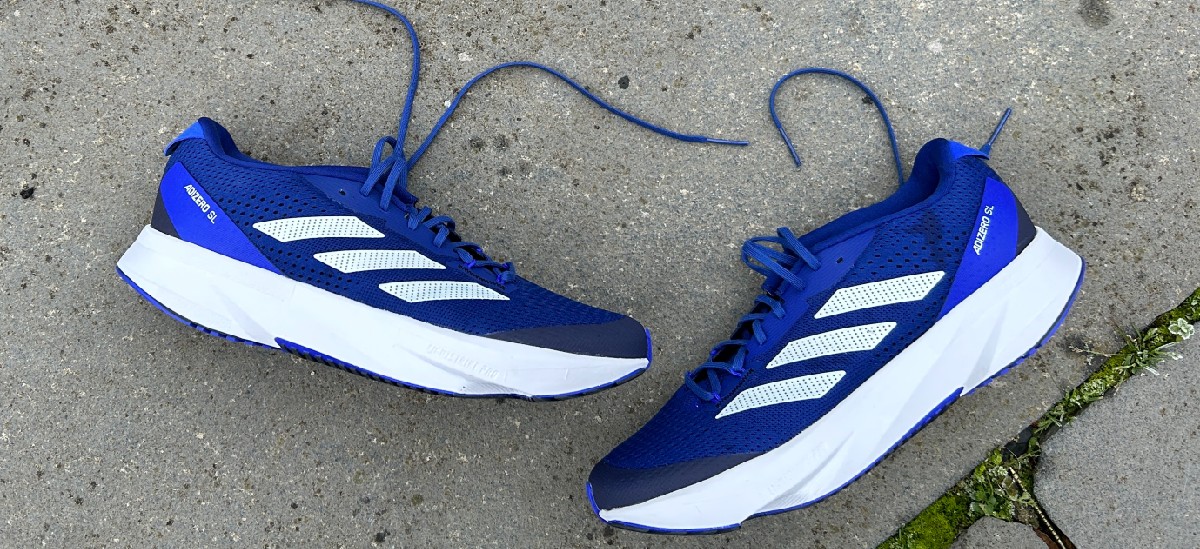Our Verdict
The Adizero SL is a solid shoe and fills a hole in Adidas’s line-up as a fairly lightweight, fairly cheap daily trainer, but has an unforgiving ride that won’t suit everyone, and is outperformed by rivals from other brands.
For
- Versatile
- Good value
Against
- Firm ride
- Better value elsewhere
- Not great over long distances
You can trust Coach
Carbon plate super-shoes with high stacks of lightweight, springy foams have become the go-to option for most runners on race day, and the tech in the best carbon plate shoes is increasingly being used by brands across their training shoe ranges as well.
With the Adidas Adizero SL, Adidas has tried to bring a little of the super-shoe experience you get from the Adidas Adios Pro 3 to a much cheaper daily training shoe. Unfortunately, this hasn’t really worked, and the Adizero SL lacks the high level of performance you get from the best running shoes, including options at the same price or less.
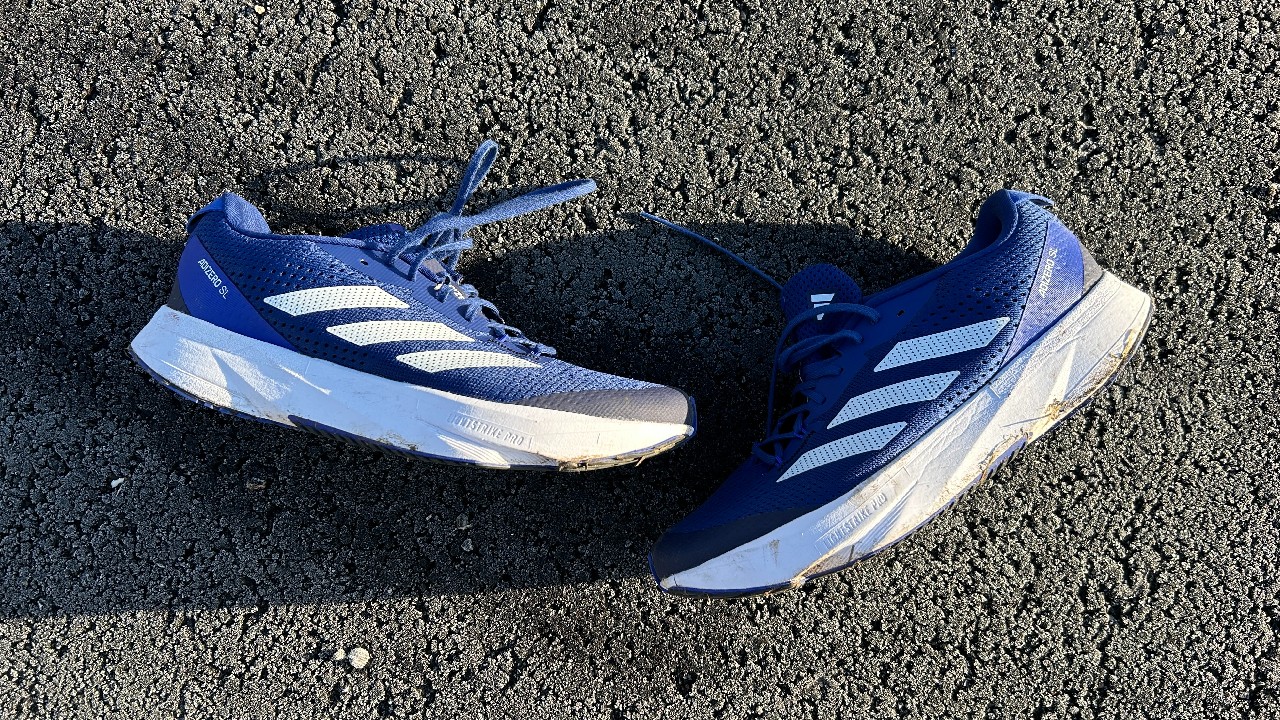
Adidas Adizero SL Review: Price And Availability
The Adidas Adizero SL launched in November 2022 and costs $120/£110. It replaces the SL20 in Adidas’s line-up and offers a cheaper route into the Adizero range than the Adios 7 and Boston 11.
Design And Fit
When Adidas says it’s bringing elite-level tech from its super-shoes to the Adizero SL, it’s the midsole it’s talking about. There is no carbon plate here, but under the forefoot is a chunk of Lightstrike Pro, the foam used on the Adios Pro 3 and other shoes in the Adizero range.
The Adizero SL also has a similar midsole design to the Adios Pro 3 in its geometry, with the same sculpted look and cut-outs to reduce weight. However, at 35mm the stack height is lower than the Adios Pro 3’s, which is 39.5mm at the heel. The Adizero SL has a 10mm drop, and a forefoot stack height of 25mm.
Outside of the Lightstrike Pro foam under the forefoot, the rest of the midsole is made of Lightstrike EVA, which fully encases the Pro foam in the forefoot. Lightstrike EVA is a pretty firm foam that is nothing like the soft and springy midsoles used in the best carbon plate running shoes, but it’s durable and delivers a stable ride for training shoes.
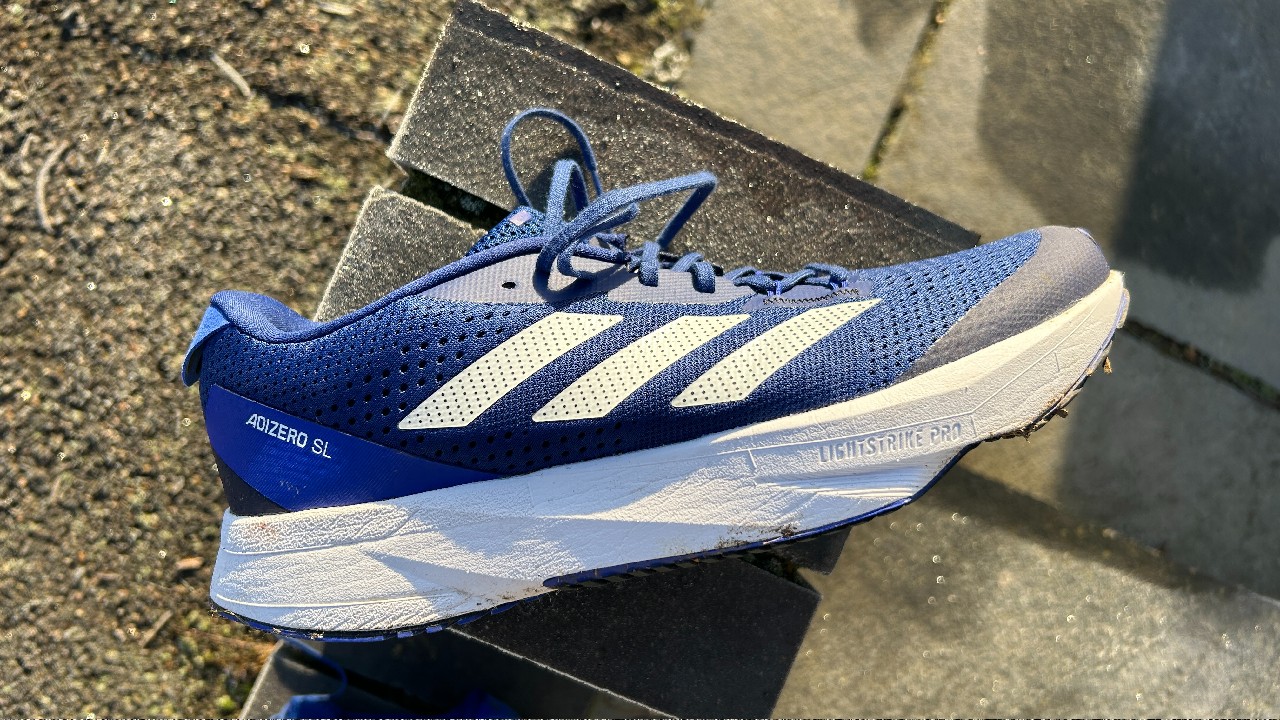
Up top there is a mesh upper with generous padding around the tongue and collar, as well as some reinforcement around the toe box. The shoe fit me OK in my normal size, but it is a little tight and when using the shoe for longer runs more room around the toes would have been appreciated. I think going up half a size might be the best option.
The SL in the name of the shoe stands for super light, which is a slight exaggeration as it weighs in at 9.2oz/260g in my UK size 9, which I’d describe as reasonably light, or RL.
Adidas has not used Continental rubber on the outsole of the Adizero SL, which it does use across the rest of its Adizero range, but the rubber that is on the SL gripped well for me on wet pavements.
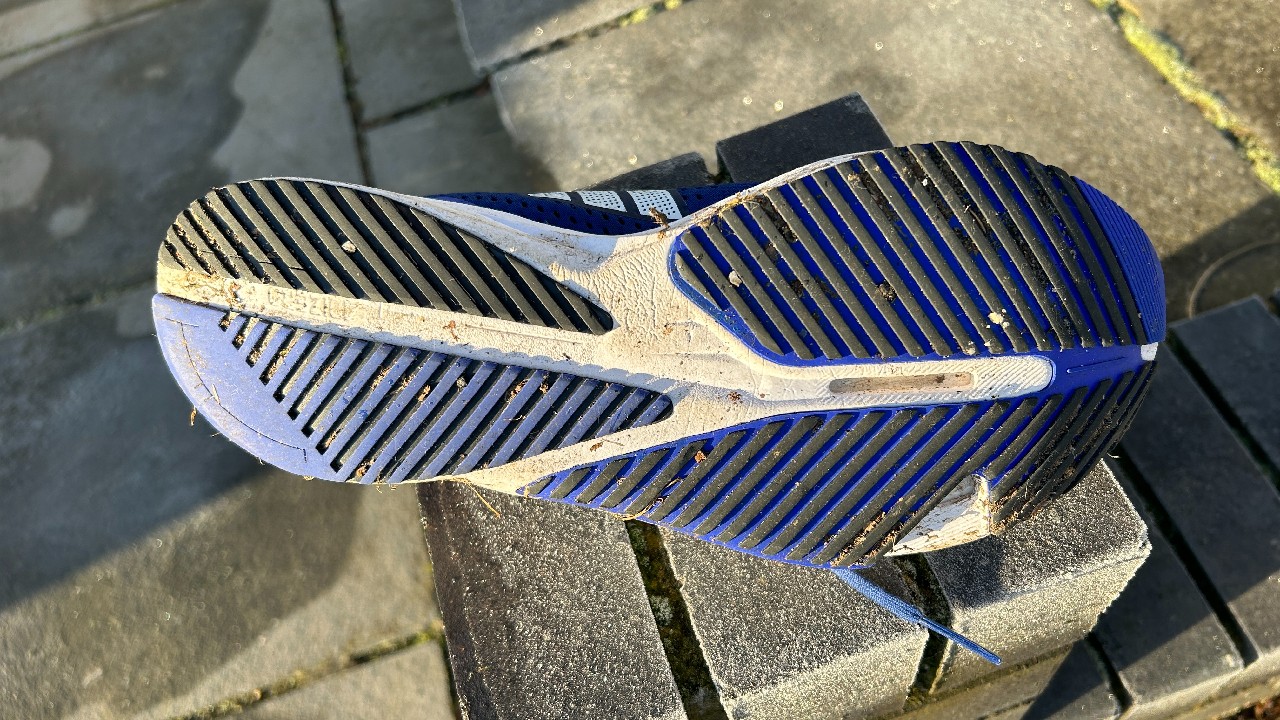
How I Tested This Shoe
I have run 50km in the Adidas Adizero SL, doing a range of daily training including easy and progression runs, plus some strides. I have also tested most of the shoes in the Adidas Adizero range.
Running Performance
My first few runs in the Adizero SL were quite short, topping out at around five miles, and I found it worked OK for easy and progression runs of that distance. The ride isn’t soft and bouncy, but it wasn’t uncomfortably firm, and the shoe is light enough for speedier paces.
However, as soon as I started using the shoe for longer runs, I did find it quite limited. It’s not particularly comfortable for easy runs, and when trying to sustain faster paces for longer than 15 to 20 minutes it felt hard and lacked punch. It doesn’t help you maintain those faster speeds, unlike shoes with springier foams or a rocker design.
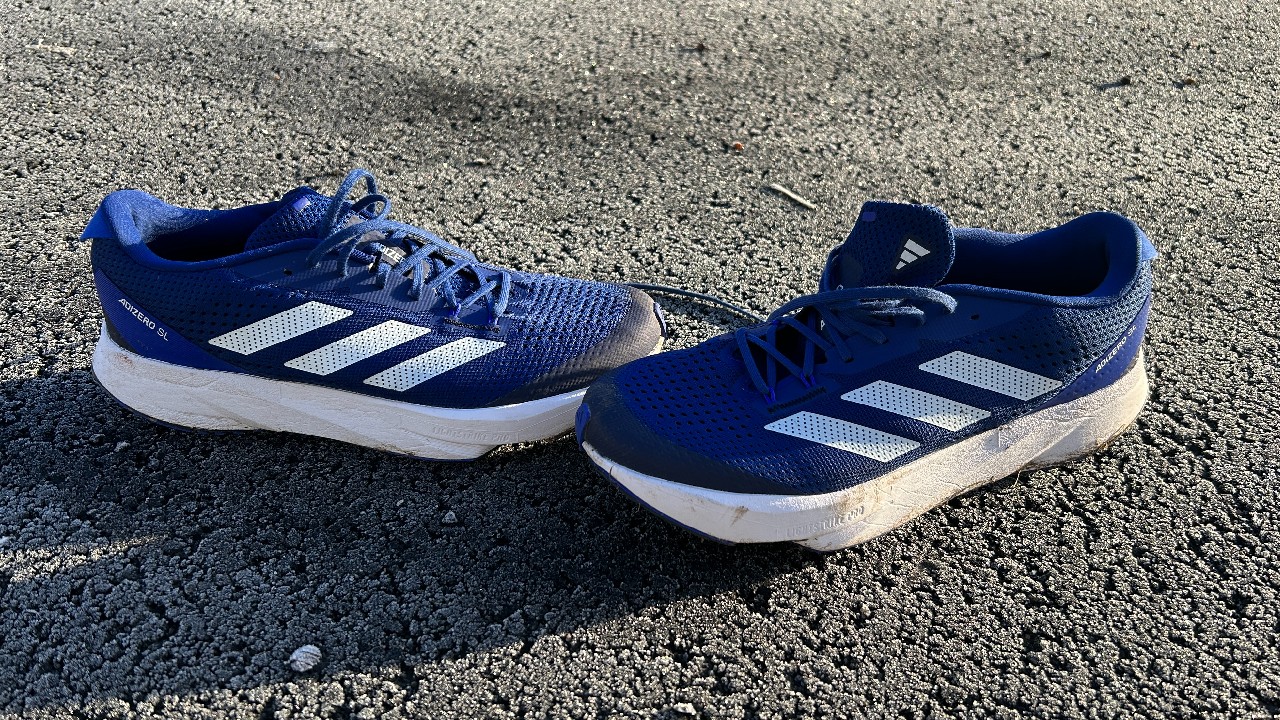
The Lightstrike EVA is certainly the foam you feel the most underfoot, and while there is a little extra pop off the forefoot from the Lightstrike Pro, the ride of the Adizero SL is simply a bit dull. It’s quite versatile in that it can do easy and faster runs equally well if sticking to shorter distances, but there are shoes that feel a lot better for those runs. If you mostly do runs of 10K and over, doing them in the Adizero SL is not particularly enjoyable.
If you prefer a firmer ride, mostly run shorter distances and are looking for a cheaper shoe – I’d expect the Adizero SL to drop below $100/£100 in sales regularly – it’s an option to consider, but for most runners there are better options available.
Is The Adidas Adizero SL Worth It?
The Adizero SL is not a shoe I loved running in. It’s not one I hated either, and at its RRP it works as a cheaper option in the Adidas range. However, you don’t have to shop in the Adidas range, and there are much better shoes available for a similar or lower price elsewhere.
One that immediately springs to mind is the Puma Velocity Nitro for $120/£100, which has a more enjoyable and comfortable ride, and is still just as good as the Adizero SL for faster stuff in my experience.
The Hoka Mach 5 and New Balance Rebel v3 are also superior shoes on every front and while they cost a little more than the Adizero SL, I’d prefer to pay the extra for the added comfort and better performance. I also prefer the Nike Pegasus 39, which again is more comfortable, though admittedly not as light as the Adizero SL.
The Adizero SL is a good hybrid of the Adios and Boston shoes in Adidas’s range, but I find the Boston a more enjoyable shoe to run in – and although it’s heavier, the carbon EnergyRods in its midsole make it a better option for faster long runs too.

Nick Harris-Fry is a journalist who has been covering health and fitness since 2015. Nick is an avid runner, covering 70-110km a week, which gives him ample opportunity to test a wide range of running shoes and running gear. He is also the chief tester for fitness trackers and running watches, treadmills and exercise bikes, and workout headphones.
